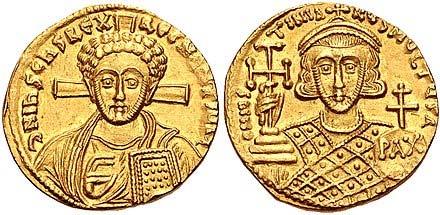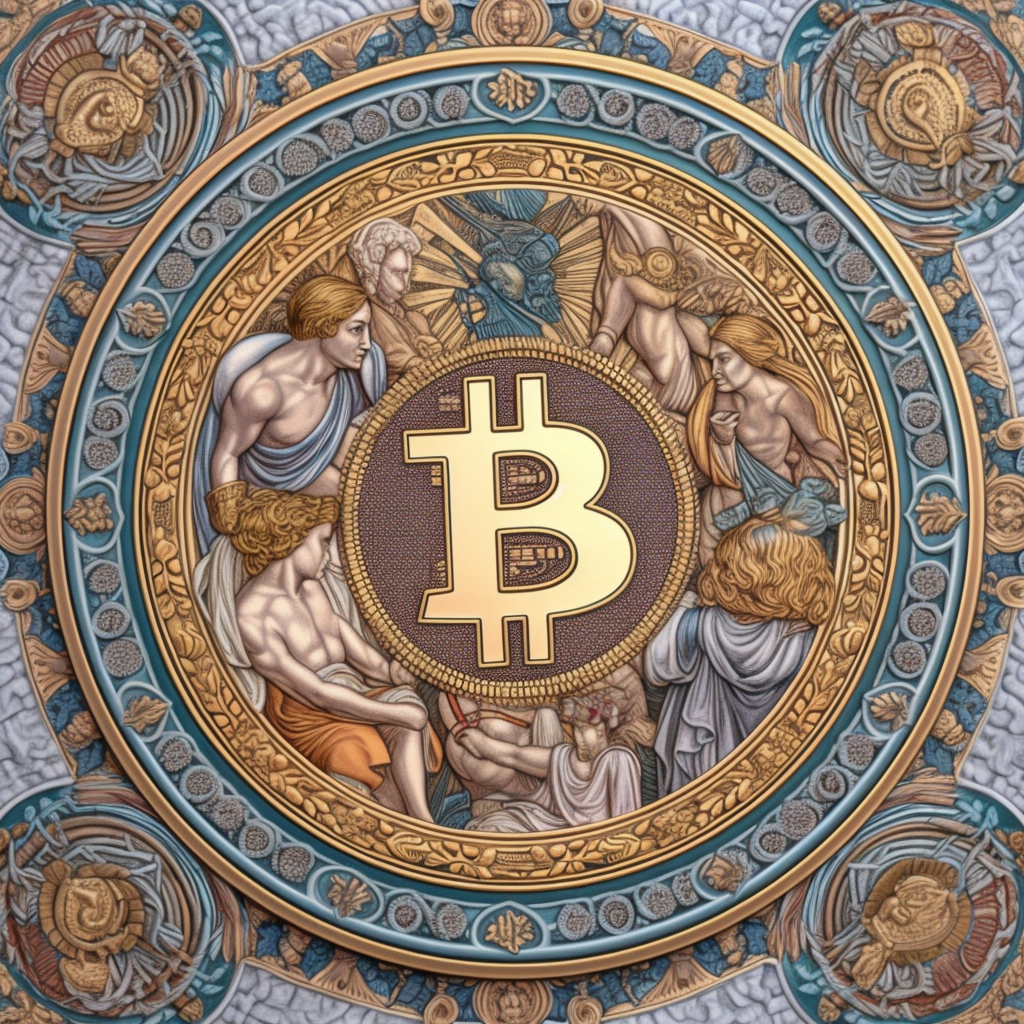
4 minute read
THE DEBAUCHERY OF CURRENCY - A Bloody History of Money
BAD MONEY: A MORE VIOLENT HISTORY
Gresham’s Law was the direct cause of the fall of the Byzantine Empire. Justinian II was a Byzantine Emperor who ruled from 685 to 695, and again from 705 to 711. He was known for his ambitious and often controversial policies, including his attempts to centralize power and his efforts to suppress dissent.
Advertisement
The standard of the international currency at that time was the Byzantine solidus. The solidus was good money, governed by law and accepted by weight. On the obverse, there were three figures of emperor Heraclius and his sons, and on the reverse side, a staff with a crossbar was depicted. Coins were inscribed “CON OB 72”, in which the first letters “CON” denoted the Constantinople mint, and the letters “OB” denoted the word Obryzum,” which means refined gold. Thus, “CON OB 72” denoted “Constantinople, 1/72 pounds of pure gold (4.5 grams).” A large number of these coins were minted, and they subsequently circulated in world trade for about 80 years.
In 689, Justinian II entered into an agreement with Abd al-Malik ibn Marwan ibn al-Hakam, ruler of the fifth Umayyad Caliphate, to split revenues from conquered territories. However, in 692, Abd al-Malik paid the annual tribute specified in the treaty with new coins cast at the mint in Damascus. Now, instead of “CON OB 72,” an inscription in Arabic was added: “In the name of God, there is no God but Allah, and Muhammad is His messenger.”
The envoys explained to Justinian that Abd al-Malik was forced to do this because the Umayyad Caliphate was constantly facing religious and political difficulties resulting from their governance over greatly enlarged territories. Justinian had a legitimate concern about the potential for the debasement of these new coins from the caliphate, which were minted outside of Justinian’s control and high standards. This would expose the Byzantine Empire to the terrible side-effects of Gresham’s Law. The introduction of Arabic as their official language complicated matters.
Justinian II flatly refused to accept such coins and demanded payment of tribute in old-style solidi. Refusal of tribute violated the agreement of 689. After unsuccessful negotiations, an armed conflict erupted, culminating in a battle at Sebastopolis (modern-day Sulusaray in Turkey). Justinian’s forces lost, and the resulting sharp depreciation of the Byzantine currency exchange rate caused upheaval throughout the Byzantine Empire.
In the Byzantine Empire, burning in a copper bull was a gruesome form of execution reserved for individuals deemed enemies of the state or those accused of severe crimes. The copper bull itself was a large, metal structure designed in the shape of a bull. It had a door or hatch that could be opened and closed, allowing the victim to be placed inside. Once the person was enclosed within the bull, a fire would be lit beneath it, slowly heating the metal, and causing it to reach scorching temperatures.
The condemned individual would experience intense heat and suffocating conditions within the enclosed space. The copper acted as a conductor, spreading the heat throughout the bull, and intensifying the suffering of the victim. The combination of searing heat, lack of oxygen, and confinement would lead to severe burns, asphyxiation, and ultimately, a slow and torturous death.
The purpose of this brutal execution method was not only to cause physical agony but also to serve as a deterrent, instilling fear in those who witnessed or heard about it.
This is how the financial officials associated with Justinian’s economic depression were executed.
Justinian II was punished by cutting off his nose in front of spectators at the Hippodrome. After that, he was known as–and this is not a joke–“Justinian the Slit-Nosed.”
What followed is known as The Twenty Years’ Anarchy. This was a period of chaos and turmoil that gripped the Byzantine Empire from 695 to 717 AD, characterized by a series of short-lived and often brutal reigns of various emperors, usurpers, and rebels. It was a time of political instability, social unrest, and military conflict which left the Byzantine Empire weakened and vulnerable to external threats. Emperors were frequently overthrown and executed by their own subjects, and battles were fought throughout the empire as different factions struggled for power. The chaos of the period also gave rise to the emergence of military leaders and regional strongmen, who seized control of large portions of the empire and acted as de facto rulers.
Justinian II was exiled to the island of Cherson (near presentday Sevastopol) in the Black Sea. He was eventually killed by his own soldiers, who had grown tired of his persistent attempts to regain power.










